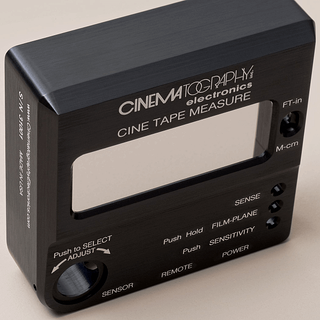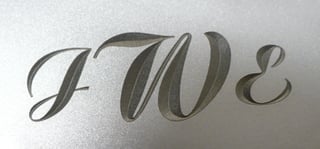Posted by Jim Earman ● Wed, Dec 06, 2017 @ 01:00 PM
Laser Marking vs. Engraving
Over the years we’ve gotten a lot of questions about the various marking techniques that can be accomplished with a fiber laser marking system. The terms "Laser Marking" and "Laser Engraving" are frequently used interchangeably but there is a difference. Generally speaking, Laser Marking refers to placing legible information onto the surface of a part with little or no penetration whereas Laser Engraving refers to placing information into a part with obvious penetration below the surface. The same laser can accomplish either technique simply by changing settings within the laser marking software.
Laser Marking
 Laser Marking/Engraving is accomplished by passing laser light through a lens and then focusing that light onto the surface of the part to be marked. If the part to be marked is made of some material that can absorb the color of light emitted by the laser (such as light from a fiber laser focused onto a metal substrate) then, just like burning leaves with a magnifying glass, the surface of the part becomes hot and the resulting heat either discolors the surface or vaporizes a small amount of material from the part. In the case in which material is being vaporized away from the part, if this process is repeated multiple times then the focused laser beam will penetrate deeper into the part until the depth of focus of the lens is exceeded and the laser is too far out of focus to continue the vaporization process.
Laser Marking/Engraving is accomplished by passing laser light through a lens and then focusing that light onto the surface of the part to be marked. If the part to be marked is made of some material that can absorb the color of light emitted by the laser (such as light from a fiber laser focused onto a metal substrate) then, just like burning leaves with a magnifying glass, the surface of the part becomes hot and the resulting heat either discolors the surface or vaporizes a small amount of material from the part. In the case in which material is being vaporized away from the part, if this process is repeated multiple times then the focused laser beam will penetrate deeper into the part until the depth of focus of the lens is exceeded and the laser is too far out of focus to continue the vaporization process.
The type of mark and the depth of the mark on the part is determined by a number of factors. The speed of the laser beam over the part, the output power and pulse frequency of the laser and the spacing of individual vector lines which comprise the marking information all have an effect on the resulting mark.
Each of the common marking techniques (engraving, ablation, dark marking, and stain marking) are achieved by changing the speed, power, and pulse frequency of the laser. Further marking refinement is aided by adjustment of the focused laser spot size and spacing of the vector lines that make up the marking information. Each marking technique affects the surface of the part in a different way. Stain marking, for example, only heats the surface of the material enough for an oxide layer to form but not enough to cause vaporization. The resulting oxide layer creates the appearance of color, usually black, although, with some amount of work, other color shades can be made to appear. Ablation marking, on the other hand, ablates away a microns thin layer of material to create a light-colored mark.
Laser Marking vs. Engraving
 So, what exactly is the difference between marking and engraving? The short answer is "the depth of the mark". Even though these two terms are often used interchangeably, specifications for laser marked parts frequently specify minimum or maximum penetration depths into the material.
So, what exactly is the difference between marking and engraving? The short answer is "the depth of the mark". Even though these two terms are often used interchangeably, specifications for laser marked parts frequently specify minimum or maximum penetration depths into the material.
Where laser marking ends and laser engraving begins is difficult to quantify. At Jimani we think of a laser marked part as having microns of depth and a laser engraved part as having mils (thousandths of an inch) of depth although there is no specific depth at which a marked part becomes an engraved part.
Learn More
Contact Jimani to learn more about laser marking, and see what they can do for you with a state of the art laser marking system.
You may be interested in these other posts:
Topics: Laser Engraving, laser marking


.png?width=295&name=footer-logo%20(1).png)